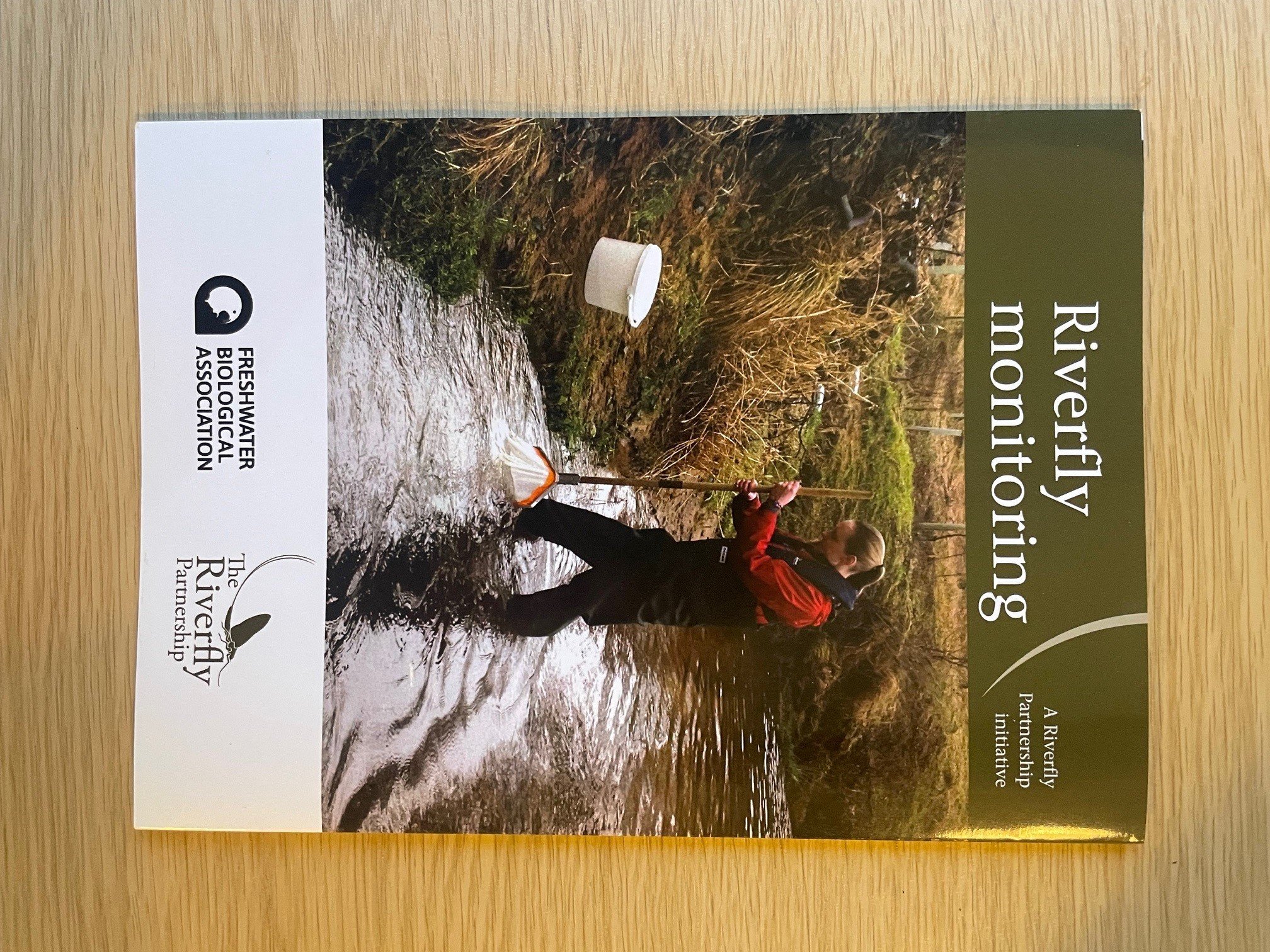Where does carbon go when a river dries? Insights from across the channel
14 July, 2023
By Romain Sarremejane*(1,2), Teresa Silverthorn (1), Nans Barthélémy (1,3), Margot Jans (1), Amélie Truchy (1,4), Naiara López-Rojo (1,4), Arnaud Foulquier (4) &Thibault Datry (1)
(1) INRAE Lyon-Grenoble Auvergne-Rhône-Alpes; (2) Nottingham Trent University; (3) University of Lyon, LEHNA; (4) University Grenoble Alpes, LECA
Romain is a research fellow at Nottingham Trent University. In 2021–2022, he contributed to a collaborative research project investigating the effects of fragmentation by drying on organic matter cycling across aquatic–terrestrial river habitats.
Edited by Rachel Stubbington, Nottingham Trent University
Rachel is both a Fellow of the Freshwater Biological Association and long-standing Editor of FBA Articles. If you would like to submit an article for consideration for publication, please contact Rachel at: rachel.stubbington@ntu.ac.uk
Introduction
Rivers are the Earth’s arteries, transporting water, nutrients and organic matter (OM) from lands to seas, and contributing to key ecosystem functions associated with carbon and nutrient cycles. OM, which is mainly composed of carbon, is recycled by heterotrophs (e.g. bacteria, fungi and invertebrates) through respiration (resulting in CO2 emission), predation and decomposition, with recycling rates reflecting an ecosystem’s health. More than 50% of the world’s river network is intermittent, drying for at least one day per year— and often for much longer (Messager et al. 2021). Despite their prevalence, we know little about the contribution of intermittent rivers to biogeochemical cycles, and in particular carbon storage and emissions (Datry et al. 2018). Drying fragments river networks, altering exchanges of OM from headwaters to mainstems and between the riparian and instream habitats, thus potentially affecting network-scale biodiversity and ecosystem functioning (Cid et al. 2022).
The Albarine River, located near Lyon, in the southern slopes of the Jura mountains (France) is an intermittent river, naturally drying every year due to its geology (see https://www.youtube.com/@ecoflows6550). Investigated for >15 years (e.g. Datry 2012; Foulquier et al. 2015), the Albarine is an ideal natural laboratory in which to develop network-scale research to better understand how communities and ecosystem functioning respond to drying across aquatic–terrestrial habitats. As climate change increases river network drying, a robust framework describing its effects on biodiversity and functioning across entire river networks is needed to inform management strategies that support functional ecosystems.
In 2021–2022, we investigated how drying affects carbon processing and transfer between riparian and instream habitats from small streams to the mainstem, and from the soil and riverbed to the atmosphere, across the Albarine river catchment (Fig. 1).
Figure 1: Study sites (dots) and examples of the diversity of habitats, including perennial (blue) and intermittent (yellow) reaches of the Albarine river network.
We addressed four questions:
1. What happens to aquatic organisms that die when a river dries?
During drying events, stranded aquatic organisms— including both animals and plants—may die. The resultant aquatic OM (AOM) that accumulates on dry riverbeds can be consumed by scavengers ranging from invertebrates to large mammals. However, this phenomenon remains poorly investigated in intermittent rivers. In spring 2021, we conducted a field experiment in the intermittent section of a small headwater stream, where we monitored the decomposition rate of animal and plant AOM on dry in-channel and riparian habitats (site 8 Fig. 1; Fig. 2).
Figure 2: The methods used to measure aquatic organic matter (a) and leaf litter (b) decomposition, and CO2 emissions (c); an isopod feeding on algae as water recedes (d). Margot and Teresa installing leaf packs (e) and measuring CO2 emissions (f), respectively.
AOM was consumed by terrestrial organisms and animal AOM was decomposed 2–3 times faster than plant AOM (Barthélèmy et al. 2022). Environmental conditions affected the AOM by altering its humidity level, modifying its palatability to scavengers. Drying may thus promote transfers of AOM to adjacent terrestrial ecosystems, but further research is needed to investigate their effects on recipient terrestrial ecosystems.
2. Is instream decomposition of leaf litter influenced by the environmental conditions it falls in?
Aquatic decomposers (e.g. invertebrates, bacteria and fungi) rely on terrestrial OM, including fallen leaves from surrounding riparian habitats, as a food resource. Before entering a flowing river, leaves fall in various environments, where they are exposed to decomposer communities and physical conditions that induce their conditioning – i.e. change in their chemical quality and physical integrity. Little is known about how such conditioning affects leaf decomposition in aquatic environments. To explore how environmental conditions influence the characteristics of decomposing leaves, we conducted a field experiment, in which alder leaves were exposed to seven environments (Fig. 2), including grasslands, forests, urban surfaces and dry riverbeds. These leaves were subsequently incubated in intermittent or perennial streams, to assess the interactive effects of flow permanence and conditioning on decomposition rates. Preliminary results indicate that conditioning may affect aquatic decomposition by microbes but not invertebrates. In the intermittent stream, drying-adapted limnephilid caddisflies and nemourid stoneflies—rushing to complete their aquatic life stages before the river dried—devoured almost all leaves, regardless of their conditioning, in < 12 days. In the perennial stream, slower decomposition reflected consumption by gammarid shrimps.
3. Does network-scale fragmentation shape decomposer communities and decomposition?
At the river network-scale, leaf resources and the communities that decompose them change from upstream to downstream. However, drying prevents aquatic communities from reaching and processing their preferred food resources. The effect of drying induced fragmentation on OM decomposition is unexplored at network scales, hindering prediction of the far-reaching impacts of drying on river carbon exchanges. To examine how drying affects river network scale leaf decomposition, we measured leaf resource quality and quantity, decomposer community (invertebrate, bacteria and fungi) structure and decomposition rates in the instream and riparian habitats of 20 sites of the Albarine river (Fig. 1). Preliminary results indicate that drying and the proportion of upstream intermittent reaches shaped invertebrate communities and their functioning across the network. In perennial but not intermittent reaches, decomposition was related to invertebrate community composition, suggesting that drying causes mismatches between community composition and resource use.
4. How much carbon do dry rivers emit to the atmosphere?
Intermittent river habitats include dry riverbeds, isolated pools and flowing waters, with these contrasting environmental conditions altering CO2 emissions. For example, reduced decomposer activity and discharge lead to OM accumulation on dry riverbeds, which upon rewetting stimulates microbial activity, resulting in major pulses of CO2 emission (Datry et al., 2018). We measured CO2 emissions using an infrared gas analyser (Fig. 2c, 2f) seven times throughout 2021, across ten intermittent and ten perennial reaches (Fig. 1). Most studies measuring CO2 emissions from dry riverbeds have been conducted in Mediterranean regions, and have found that dry sediments emit CO2 at a higher rate than flowing waters, and that these emissions are driven by sediment temperature, grain size, and nutrient content (Gómez-Gener et al., 2016). In our temperate study area, we found the opposite, with lower mean CO2 emissions from dry riverbeds than flowing waters. As such, our work indicates that regional variability in dry riverbed CO2 emissions could alter global-scale CO2 emission estimates, particularly given the global prevalence of dry rivers.
Application to river network management
Our research highlights the significant role drying plays within river networks, contributing to local and network-scale biodiversity and biogeochemical cycles. By identifying where, when and under which conditions OM may accumulate and hotspots of decomposition and CO2 emissions occur, our research can inform network-scale management. As climate change increases river drying in space and time, accounting for flow intermittence in river management plans is vital to support healthy, functional ecosystems which deliver benefits to people. As such, the Albarine serves as a case study to develop management tools and methods that integrate intermittence at river network scales. In particular, we invite FBA members to join other European citizen scientists using the DRYvER mobile phone app to record drying in river networks.
Acknowledgements
This research was supported by the European Union’s Horizon 2020 research and innovation FBA News, No. 87 Spring 2023 15 programme under the grant agreements no. 891090 (MetaDryNet) and 869226 (DRYvER). We also thank all the students, technicians and researchers that contributed to this research.
References
Barthélémy, N. Sarremejane, R. & Datry, T. 2022. Aquatic organic matter decomposition in the terrestrial environments of an intermittent headwater stream. Aquatic Sciences 84: 45. https://doi.org/10.1007/s00027-022-00878-z
Cid, N. et al. 2022. From meta-system theory to the sustainable management of rivers in the Anthropocene. Frontiers in Ecology and the Environment 20: 49–57. https://doi.org/10.1002/fee.2417
Datry, T. 2012. Benthic and hyporheic invertebrate assemblages along a flow intermittence gradient: effects of duration of dry events. Freshwater Biology 57: 563–574. https://doi.org/10.1111/j.1365-2427.2011.02725.x
Datry, T. et al. 2018. A global analysis of terrestrial plant litter dynamics in non-perennial waterways. Nature Geoscience 11: 497–503. https://doi.org/10.1038/s41561-018-0134-4
Foulquier, A. et al. 2015. Drying responses of microbial litter decomposition and associated fungal and bacterial communities are not affected by emersion frequency. Freshwater Sciences 34: 1233–1244. https://doi.org/10.1086/682060
Gómez-Gener, L. et al. 2016. When water vanishes: magnitude and regulation of carbon dioxide emissions from dry temporary streams. Ecosystems 19: 710-723. https://doi.org/10.1007/s10021-016-9963-4
Messager, M.L. et al. 2021. Global prevalence of non-perennial rivers and streams. Nature 594: 391–397. https://doi.org/10.1038/s41586-021-03565-5
Further reading
The Freshwater Biological Association publishes a wide range of books and offers a number of courses throughout the year. Check out our shop here.
Get involved
Our scientific research builds a community of action, bringing people and organisations together to deliver the urgent action needed to protect freshwaters. Join us in protecting freshwater environments now and for the future.











